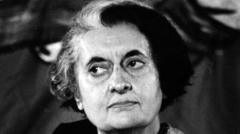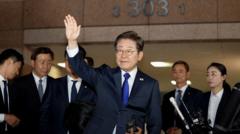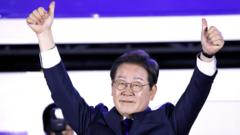During India's Emergency in the mid-1970s, Indira Gandhi's government contemplated a shift from parliamentary democracy to a centralized presidential system, aiming to consolidate power. Despite the fervent advocacy of trusted aides and party officials, these ideas found no formal footing, leaving an enduring legacy of centralization and weakened checks on power.
Echoes of Authority: The Presidential Dream That Almost Was for India

Echoes of Authority: The Presidential Dream That Almost Was for India
Exploring Indira Gandhi's push for a presidential system during India's Emergency years reveals a transformative but thwarted political vision.
During the turbulent mid-1970s, India underwent a significant political transformation under the authoritarian rule of Prime Minister Indira Gandhi, who imposed an Emergency that suspended civil liberties and jailed opposition members. Historian Srinath Raghavan delves into this period in his book, "Indira Gandhi and the Years That Transformed India," uncovering how the Congress party began contemplating a shift towards a presidential system of governance, effectively sidelining the role of traditional checks and balances.
This centralization of power echoed a desire for a stronger presidency akin to Charles de Gaulle's France, reflecting frustrations with the limitations of a parliamentary democracy. The seeds for this political ambition were planted in September 1975 by BK Nehru, a close aide to Gandhi, who engaged her in a discussion about the need for a directly elected president who could make decisive, often unpopular decisions without the constraints of parliamentary approval.
Nehru’s blueprint proposed a transformative constitutional redesign, including a single lengthy presidential term, less power for the judiciary, and the potential erosion of fundamental rights. Eager to capitalize on her substantial parliamentary majority, Gandhi initially remained non-committal but instructed aides to discreetly explore these proposals.
Support among party leaders was enthusiastic, with some suggesting radical changes, including an assembly that would grant Gandhi a "life presidency". Despite these fervent discussions, the proposals were never solidified into legislation. Nonetheless, elements of this presidential drift found expression in the 1976 Forty-second Amendment, which expanded parliamentary powers, diminished judicial review, and facilitated direct federal rule during emergencies.
Even after Gandhi's electoral defeat in 1977, the push for restoring the traditional parliamentary balance led to subsequent amendments aimed at rolling back the authoritarian provisions established a year prior. When Gandhi returned to power in 1980, discussions about transitioning to a presidential system resurfaced, especially as she contemplated the presidency herself after the term of President Sanjiva Reddy.
Ultimately, however, Gandhi chose to nominate a loyal ally instead of pursuing the presidency for herself. This flirtation with a presidential model highlighted the lingering desire for centralization within the Congress party—yet it never crystallized into actual governance reform. The assassination of Gandhi in 1984 abruptly ended these discussions, leaving India firmly within the realms of a parliamentary democracy, albeit one grappling with the legacies of centralization and weakened political checks.






















